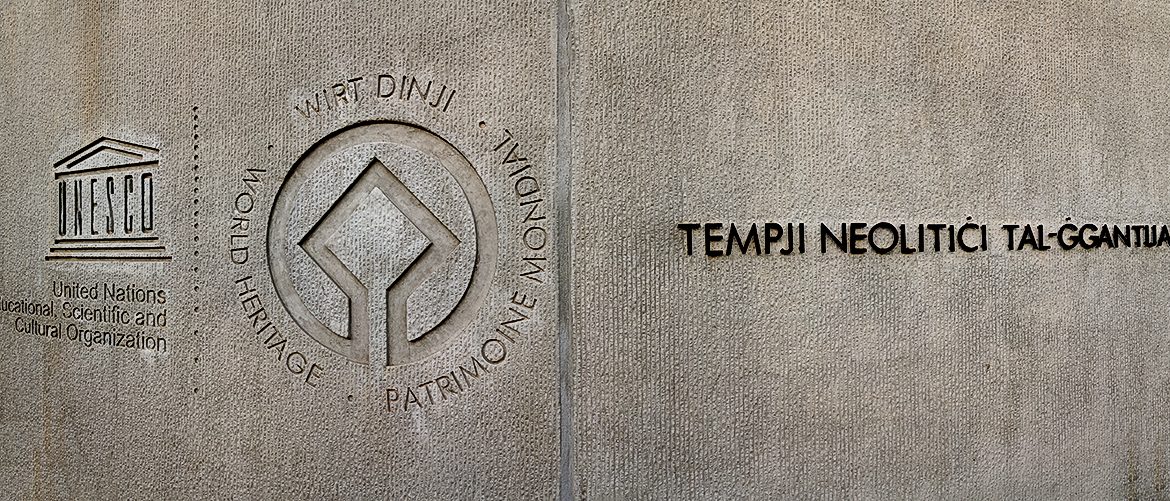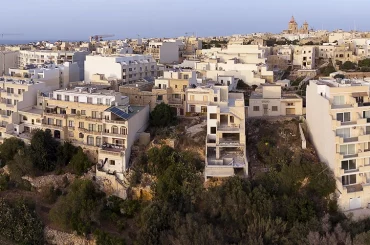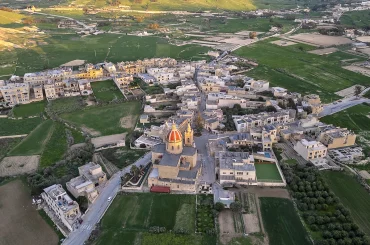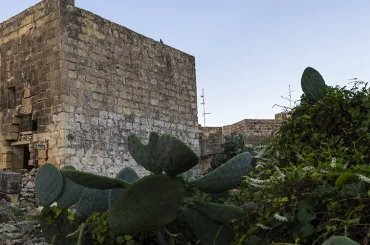I have sent the following letter to Lazare Eloundou Assomo, director of UNESCO's World Heritage Centre, which has oversight over UNESCO's World Heritage Sites, including Malta's Ggantija Temples.
I am writing to inform you of the approval of a block of flats in Ggantija Temples' buffer zone on 19 October 2023 (Planning Authority case PA/05562/21). Equally or more importantly, I shall inform you of the reasons given by high officials during the meeting to refute or refuse calls for Heritage Impact Assessment when an NGO representative read from the letter you had written to Malta's Permanent Delegate to UNESCO.

Firstly, the approval of PA/05562/21. This is especially significant because it creates a precedent for approval of other similar pending applications in the part of the buffer zone close to Ggantija Temples. It also gives an idea to developers that buildings of four storeys or even potentially higher are now likely to be approved. This is set to generate interest in an area that, until now, developers have considered as a difficult area to obtain permits for blocks of flats precisely because it is in the buffer zone.
This means that, as a State Party to the World Heritage Convention, Malta is not carrying out its responsibilities that arise from being party to the Convention.
Secondly, at the meeting of 19 October 2023, Daniel Cilia, speaking for the NGO Din L-Art Helwa (Gozo branch), read from the letter dated 22 December 2022 which you sent to the Permanent Delegate of Malta to UNESCO, Mgr Dr Joseph Vella Gauci.

Emmanuel Camilleri, chairperson of the Planning Board and member of the Executive Council, intervened to tell Mr Cilia that matters relating to UNESCO had already been 'seen to' by the Superintendence of Cultural Heritage.
However, at no time throughout the process did the Superintendence request or recommend any of the requirements found in the Operational Guidelines – whether screening, or Heritage Impact Assessment in relation to this proposal, or any cumulative impact assessments in respect to all the pending development applications for flats in the buffer zone.
Oliver Magro, Executive Chairperson of the Planning Authority, also intervened and said the following things:
- That the law does not require a Heritage Impact Assessment for the type of development application that was being decided, and that an HIA can only be requested for a ‘scheduling application’;
- That it is not correct to say that the site (PA/05562/21, approved that day) falls in the buffer zone and neither does another case (PA/00570/21 presumably, which Mr Magro said falls in the Area of Archeological Importance, not the buffer zone);
- That your letter of 22 December 2022 was addressed to the Maltese government and not the Planning Board members. Mr Magro then told Mr Cilia that everyone has a right to appeal if the proposal is approved (which it was), adding that issues [request for a Heritage Impact Assessment] cannot be raised ‘at the eleventh hour’ for a development application that has been there for a long time.
I am attaching two relevant maps in this email:
Map 1 Buffer and AAI: This is the map found in UNESCO's documentation, showing the buffer zone and the Area of Archeological Importance, which cover the same ground. The area shaded red shows development application PA/05562/21 (approved on 19 October 2023); the area marked in yellow shows the site of PA/00570/21 (that Mr Magro presumably referred to during the meeting). Both sites are in the buffer zone; both sites are also in the Area of Archeological Importance.

Map 2 AAI: This map was published by the Planning Authority in the Government Gazette on 17 August 2010 shows the Area of Archeological Importance, which covers the same area as the buffer zone on UNESCO's map. In this map I am marking PA/05562/21 in red and PA/00570/21 in yellow. Other sites are marked in purple: three of these are pending applications for blocks of flats, and one of these has been granted permit (read a journalistic investigation about how the permit was granted in this case by clicking here).

In reality, in your letter you called for Heritage Impact Assessments "within and around a World Heritage property," and then also wrote about negative impacts on the the "wider setting" – all of this in keeping with guidelines published by the World Heritage Centre that talk about assessing impact of developments, particularly cumulative impact, within the buffer zone as well as the wider setting.
So even if we had to take the smaller 'buffer zone' that Mr Magro was referring to – which can be found on the online map of the Planning Authority's website (and which is contradicted by UNESCO's map, as well as Area of Archeological Importance in the online map itself) – this would still not detract from UNESCO's guidelines, and the letter that Mr Cilia was reading, which call for assessments for development in the buffer zone as well as the wider setting.

It is also pertinent to note that the Development Planning Act makes a comprehensive land use planning system the duty of the Maltese government, and Article 7 of the law states that the “[Planning] Authority shall be the principal means whereby the Government shall implement its duties under this Act.”
It is clear from the above that the Maltese State is not adhering to the Operational Guidelines when it comes Heritage Impact Assessments within the buffer zone (or Area of Archeological Importance) of Ggantija Temples.
Moreover, the interventions of the Planning Authority's top officials in the meeting of 19 October also suggest that there is little or no interest in observing the Operational Guidelines of the World Heritage Committee (or the World Heritage Centre).
This means that, as a State Party to the World Heritage Convention, Malta is not carrying out its responsibilities that arise from being party to the Convention at least in regards to assessments in the buffer zone of Ggantija Temples.
I understand that the information above may lead to inquiry or appraisal by the World Heritage Centre, and eventually possible reference to the World Heritage Committee, which may consider the removal of Ggantija Temples (possibly together with other Maltese temples in the same listing) from the World Heritage list.
I am saddened to be the bearer of such information.
If you require further information, I would be happy to clarify any queries to the best of my knowledge.
Featured Image: Sign proudly proclaiming 'world heritage' status at the entrance to Ggantija Temples.
Our Heritage Needs You
It takes much resources, time, and effort to take initiatives in a bid to save the the setting and integrity of Ggantija Temples, Ta Kola Windmill, and one of the few areas throughout Malta that largely survives as an enclave of two-storey townhouses. I rely on income from donations to able to do more of this. Click on learn more button to see how your donation can support this investigative reportage and other personal initiatives such as letters and reports to UNESCO.





